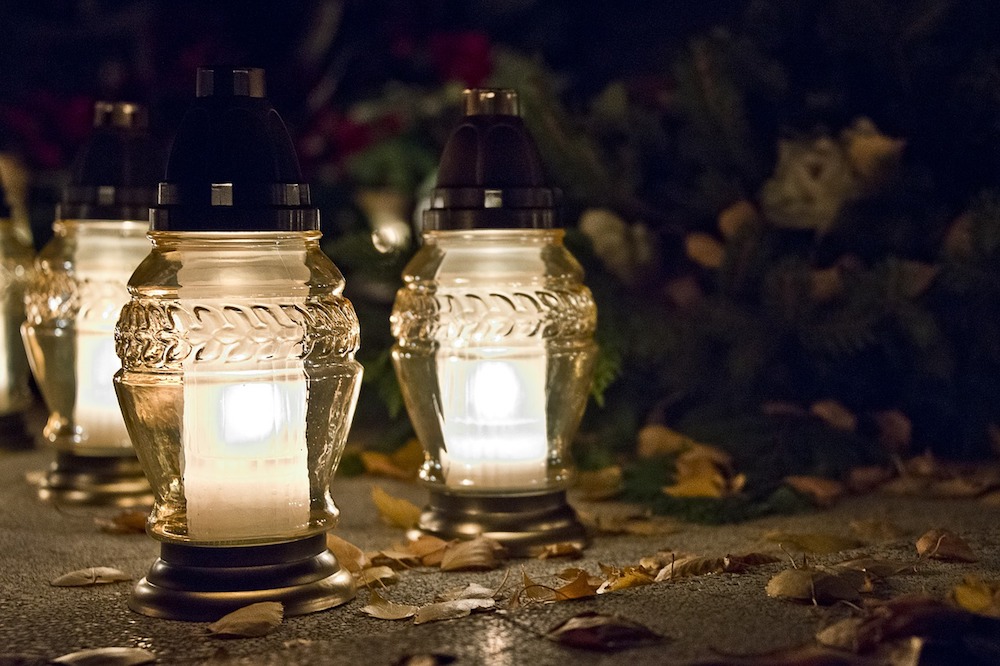With ghouls and goblins roaming the streets after dark, one might think that Halloween is at odds with our Christian faith. But that’s not necessarily true.
The celebration of Halloween dates back before the birth of Christianity and was celebrated by the Celtic people (they called it Samhain). This festival marked the end of summer and the beginning of winter (a time that was often marked by human death). It was believed that on the night of Samhain (October 31), the ghosts of the dead came back to earth. They lit bonfires, dressed up in costumes, and bobbed for apples. Sound familiar?
By the time of Christ, the Roman Empire had overtaken most of the Celtic territory and combined some Celtic and Roman traditions.
In 609 CE, Pope Boniface IV established All Martyrs Day to be celebrated in mid-May. About 100 years later, Pope Gregory III expanded the celebration to include saints as well as martyrs and moved the date to November 1. So the night before All Saints Day or All Hallows Day is All Hallows Eve, or Halloween.
Like many of our holidays, Halloween has become more of a secular time. But the day after Halloween, All Saints Day, is decidedly Christian. And while All Saints Day is November 1, most churches—including River Road—celebrate the holiday on the following Sunday.
All Saints is a time of remembrance and celebration. We remember the saints in the River Road family who died in the previous year and we celebrate all they mean to us.
The choral and organ music for Sunday’s All Saints celebration was composed by Louis Vierne, who is primarily known for his six groundbreaking symphonies for solo organ.
Vierne (1870-1937) was born with severe cataracts which rendered him essentially blind. At the age of six, he underwent a procedure that restored some vision, but he could only read large-sized text and composed at an easel using a large pad and thick crayon. His musical ability was observed at an early age, and he studied theory, piano and violin at Paris’ Institute for Blind Youth, where he met the composer and organist, César Franck, who encouraged him to study organ. After some private harmony lessons with Franck, Vierne enrolled in his organ course at the Conservatoire de Paris. When Franck was tragically killed in a traffic accident, Vierne began studying with Franck’s successor, Charles-Marie Widor. He rapidly developed into a virtuoso performer with a fine improviser. He became Widor’s assistant at the Conservatoire and his deputy organist at St. Sulpice. In 1900, he won the prestigious post of “organist titulaire” of Notre Dame Cathedral.
Vierne composed his Messe Solennelle in C-sharp minor between 1898 and 1900. He had originally planned to set it for chorus and orchestra, but Widor, his colleague, persuaded him to compose it in a two-organ version instead. It was premiered in 1901 at St. Sulpice in Paris, with Widor and Vierne at the church’s two organ consoles.
The second movement of Vierne’s Symphony No. 2 will be played as the opening voluntary, and the first movement at the conclusion of the service. Although these two movements are very different in character, they actually treat some similar thematic material, demonstrating Vierne’s use of cyclical form, a method of tying together a large or multi-movement work by using recurring themes.
We hope that you will attend worship this Sunday at 11am as we celebrate All Saints Day through this uplifting choral and organ music. Many thanks to David Gulick, who will conduct the choir in the singing of this stirring work.
Written by Bob Gallagher & Daniel Glaze


I was in Poland on All Hallows Eve In 2009 with my daughter, Dr. Elizabeth Morrow Clark, a Fulbright scholar doing research in Gdansk. We went to a Cemetery with the Polish pastor and his wife . It was a clear crisp autumn evening. Families had gathered from far and near to honor their dead by putting beautiful Fall mums on each grave and lanterns. Now I understand All Hallows Eve.